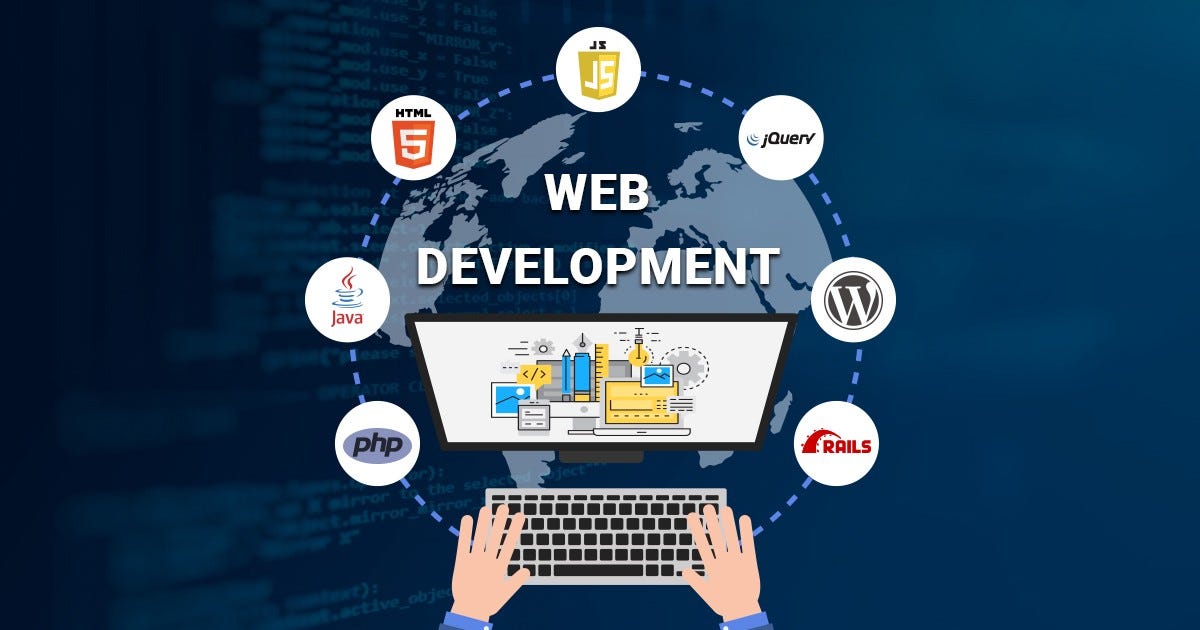Website development refers to the process of creating and building a website, involving various technical aspects to bring the design and functionality to life. Here’s an overview of the website development process:
Planning and Requirement Gathering: Start by defining the purpose, goals, and target audience of your website. Determine the features and functionalities you need, and create a plan for the website’s structure and content.
Choose a Technology Stack: Select the appropriate technology stack based on your website’s requirements. This includes choosing a programming language (such as HTML, CSS, JavaScript, Python, PHP, or Ruby) and a framework or content management system (such as WordPress, Drupal, or Laravel) to streamline development.

Information Architecture: Create a logical and organized structure for your website. Develop a sitemap to outline the main pages and their relationships. Consider user flow and navigation to ensure easy and intuitive access to information.
Design Implementation: Take the visual design or wireframes created by the designers and convert them into a functional website. Write HTML and CSS code to structure and style the website elements. Implement responsive design techniques to ensure the site is accessible on different devices.
Backend Development: Develop the server-side functionality that powers your website. This includes setting up a database, writing server-side code (using programming languages like PHP, Python, or Ruby), and creating APIs if required. Implement features such as user authentication, form submissions, data processing, and content management.
Frontend Development: Build the client-side or frontend of the website. Use JavaScript frameworks (such as React, Angular, or Vue.js) to add interactivity and dynamic elements. Implement frontend components, animations, and user interface (UI) elements to enhance the user experience.
Content Integration: Integrate the website with your content, including text, images, videos, and other media. Use a content management system (CMS) to make content updates easier and more efficient.
Testing and Quality Assurance: Thoroughly test your website to identify and fix any bugs, errors, or compatibility issues. Perform cross-browser testing to ensure proper functionality across different web browsers. Conduct usability testing to gather feedback and make necessary improvements.
Deployment and Hosting: Choose a reliable web hosting provider and deploy your website to make it accessible on the internet. Set up the necessary server configurations, domain name, and SSL certificate for secure browsing.
Maintenance and Updates: Regularly maintain and update your website to ensure it remains secure, up-to-date, and functional. Monitor website performance, fix any issues that arise, and keep the content fresh and relevant.
Remember, website development requires a combination of technical expertise, coding skills, and attention to detail. It’s often beneficial to work with experienced web developers or a web development agency to ensure a smooth and successful development process






